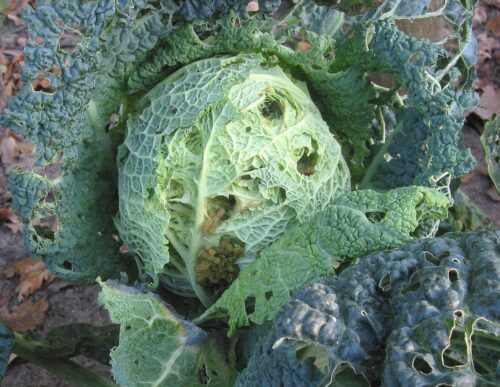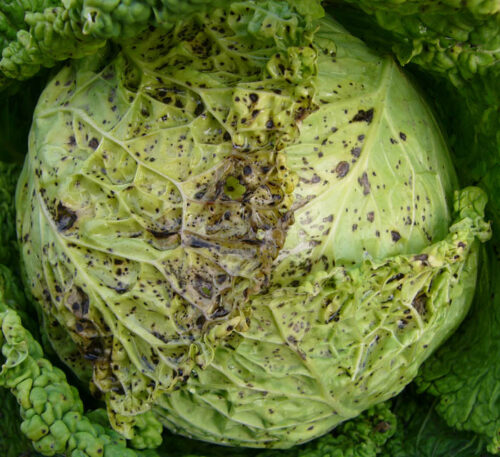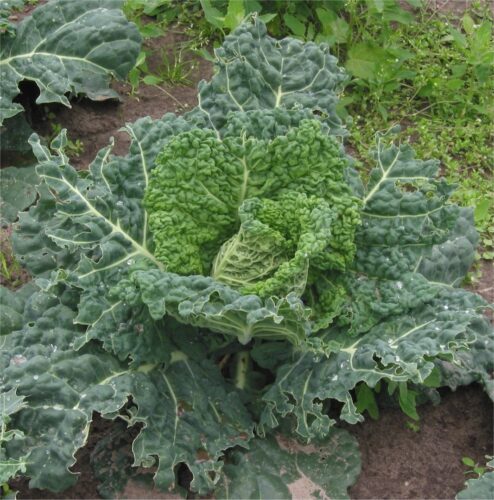Savoy cabbage is a winter vegetable and one of the many types of cabbage. It has wrinkled, emerald green, crisp leaves.
Savoy cabbage is also known as:
Milan cabbage
Lombard cabbage
You are viewing the mobile-adapted version of the page.
The one for tablets, laptop and desktop also provides general information, such as origin and cultivation.
Savoy cabbage (Brassica oleracea convar. capitata var. sabauda) is a winter vegetable and one of the many types of cabbage. It has wrinkled, emerald green, crisp leaves.
Savoy cabbage is mostly grown in spring and late summer/early autumn:
Spring cultivation is easiest: pre-sow under glass from February to early March. Transplant the seedlings in April; seedlings are also available in garden centers during that month.
For summer/autumn cultivation: sow in April and May directly into open ground.
Savoy cabbage likes rich, humus and calcareous soil. Additional farmyard manure is almost always necessary.
Bugs

Leaf is eaten by caterpillars of large white (Pieris brassicae) and cabbage moth (Mamestra brassicae).

White flies colonize the underside of the leaf. They feed on leaf sap and secrete honeydew: Cabbage whitefly (Aleyrodes proletella) . Sooty mold then forms on the honeydew.

Leaf is eaten and slime trails can be seen: snails and slugs. During humid periods, ubiquitous slugs and snails can cause great damage.
Fungi & diseases

Light and dark spots appear on the cabbage, discoloring to brown-black: mosaic virus.
Poor growth, plant wilting, swollen roots rotting away: Clubroot (Plasmodiophora brassicae).
Leaf yellows and turns brown, eventually the leaves fall off: downy mildew (Peronospora parasitica).


